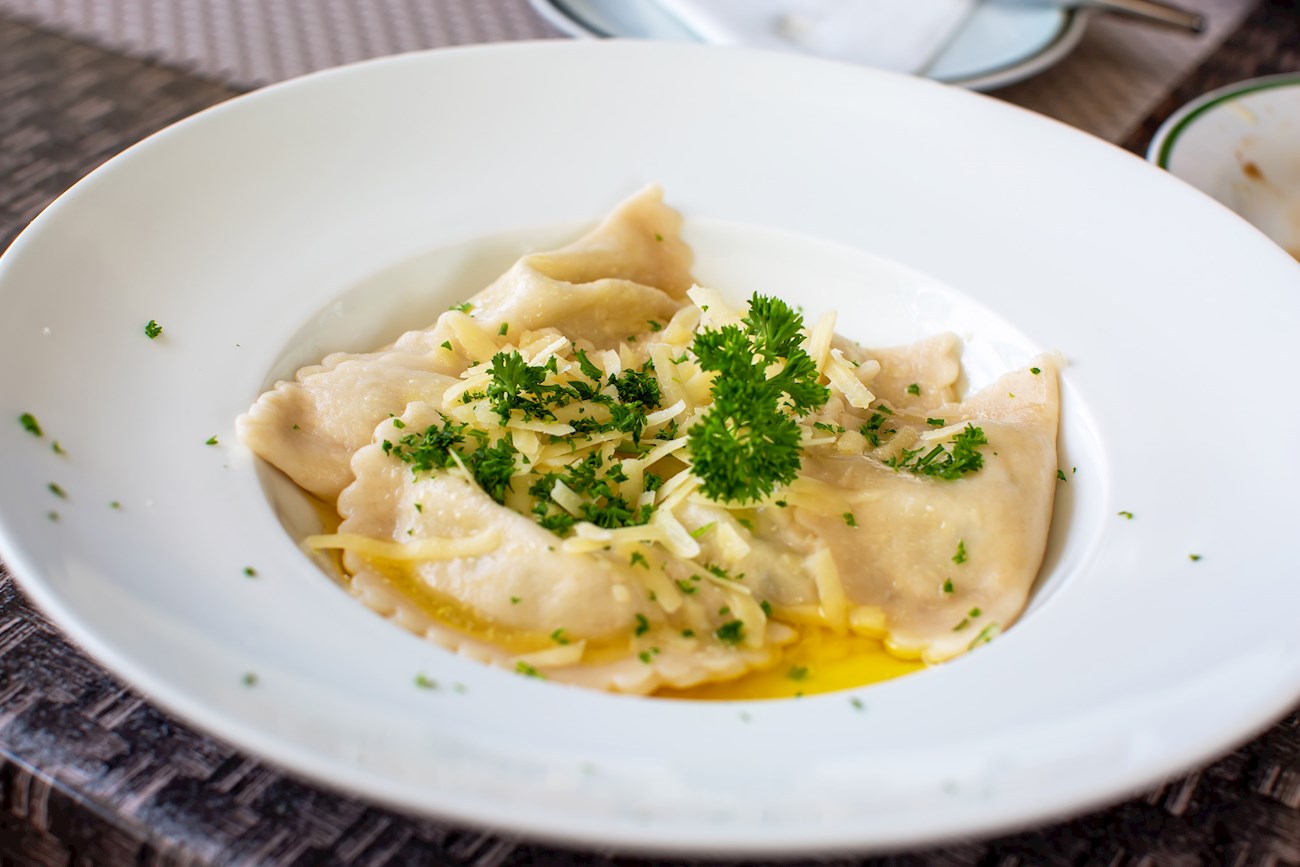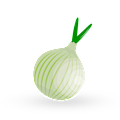MAIN INGREDIENTS
Käseknödel is a traditional dumpling enriched with cheese originating from Tyrol and South Tyrol. These cheese dumplings are typically served as a side dish that shows an inventive way of using leftover stale bread. The stale bread is mixed with cheese, eggs, butter, milk, onions, parsley, salt, and pepper.
Käseknödeln are usually boiled in water or fried in butter on both sides until golden brown and then served in a broth or with various salads and stews.
MAIN INGREDIENTS
Mezzelune or schlutzkrapfen is a unique pasta variety that is popular both in Italy and Austria, especially in the area of South Tyrol. The pasta has a semicircular shape, which is the reason why it is called mezzelune (half moons in Italian).
The dough is typically made from wheat and buckwheat flour, semolina, eggs, and olive oil. The pasta is stuffed with various ingredients, just like ravioli. Common fillings include ingredients such as cheese, mushrooms, potatoes, meat, or spinach.
Mezzelune are often served with sauces such as pesto and paired with seafood, sausages (salsiccia), or fresh vegetables such as cherry tomatoes.
Tris di canederli or Knödel Trio is a Tyrolean dish that features a trio of canederli, which are bread dumplings popular in the northern regions of Italy and southern Austria.
Canederli are made from a mixture of stale bread soaked in milk, eggs, and typically combined with ingredients like speck (a regional type of smoked ham), cheese, spinach or beet. The mixture is then shaped into dumplings and boiled in broth or water.
Spinatknödel is a spinach dumpling from Tyrol that is usually served as a side dish. It provides an inventive way of using up leftover stale bread, which is combined with a combination of spinach, eggs, butter, garlic, onions, and cheese, preferably parmesan.
After they have been boiled, the dumplings are traditionally drizzled with melted butter and sprinkled with grated cheese.
MAIN INGREDIENTS
Pilzeknödel or canederli ai funghi is a traditional dumpling enriched with mushrooms. The dumplings originate from Tyrol and South Tyrol and they're typically served as a side dish that displays an inventive way of using leftover stale bread.
The bread is usually mixed with mushrooms (porcini or chanterelle), eggs, butter, milk, onions, parsley, salt, and pepper in order to make the dumplings. Pilzeknödel are boiled in water or fried in butter on both sides until golden brown. They're typically served in a broth or with a variety of stews.
Mushroom dumplings can also be enjoyed as they are, sprinkled with grated Parmigiano-Reggiano.
MAIN INGREDIENTS
These bacon dumplings originate from the Austrian Tyrol and Italian South Tyrol but are known throughout the entire Alpine region of Europe. Speckknödeln are made by mixing stale bread with eggs, sauteed bacon, and onions. They are cooked in boiling water and typically served with a hearty stew or a clear, hot soup, although they are also often consumed as an appetizer.
Speckknödeln make a great accompaniment to the Alpine dish called Gröstl, but they're also served on a bed of lettuce or over sauerkraut.
Tiroler knödel are traditional dumplings from the Tyrol region of Austria that are hearty and rustic, reflecting the mountainous region they come from.
The dumplings are typically made from stale bread, milk, eggs, and onions, with the distinguishing inclusions of speck, spinach, cheese, mushrooms, and other local ingredients. Once the dumpling mixture is prepared, it's usually shaped into balls and boiled.
VARIATIONS OF Tiroler Knödel
MAIN INGREDIENTS
Speckknödelsuppe is a soup from the Austrian province of Tyrol. It's also popular in the Italian South Tyrol region, where it's called canederli con speck in brodo. The soup features dumplings made from stale bread and bacon, and a clear, (usually beef) broth that is cooked separately.
The dumplings are first cooked, then added to the soup which can contain additional ingredients such as carrots and leeks. When ready to serve, this dumpling soup is usually garnished with chopped chives or parsley.
TasteAtlas food rankings are based on the ratings of the TasteAtlas audience, with a series of mechanisms that recognize real users and that ignore bot, nationalist or local patriotic ratings, and give additional value to the ratings of users that the system recognizes as knowledgeable. TasteAtlas Rankings should not be seen as the final global conclusion about food. Their purpose is to promote excellent local foods, instill pride in traditional dishes, and arouse curiosity about dishes you haven’t tried.












